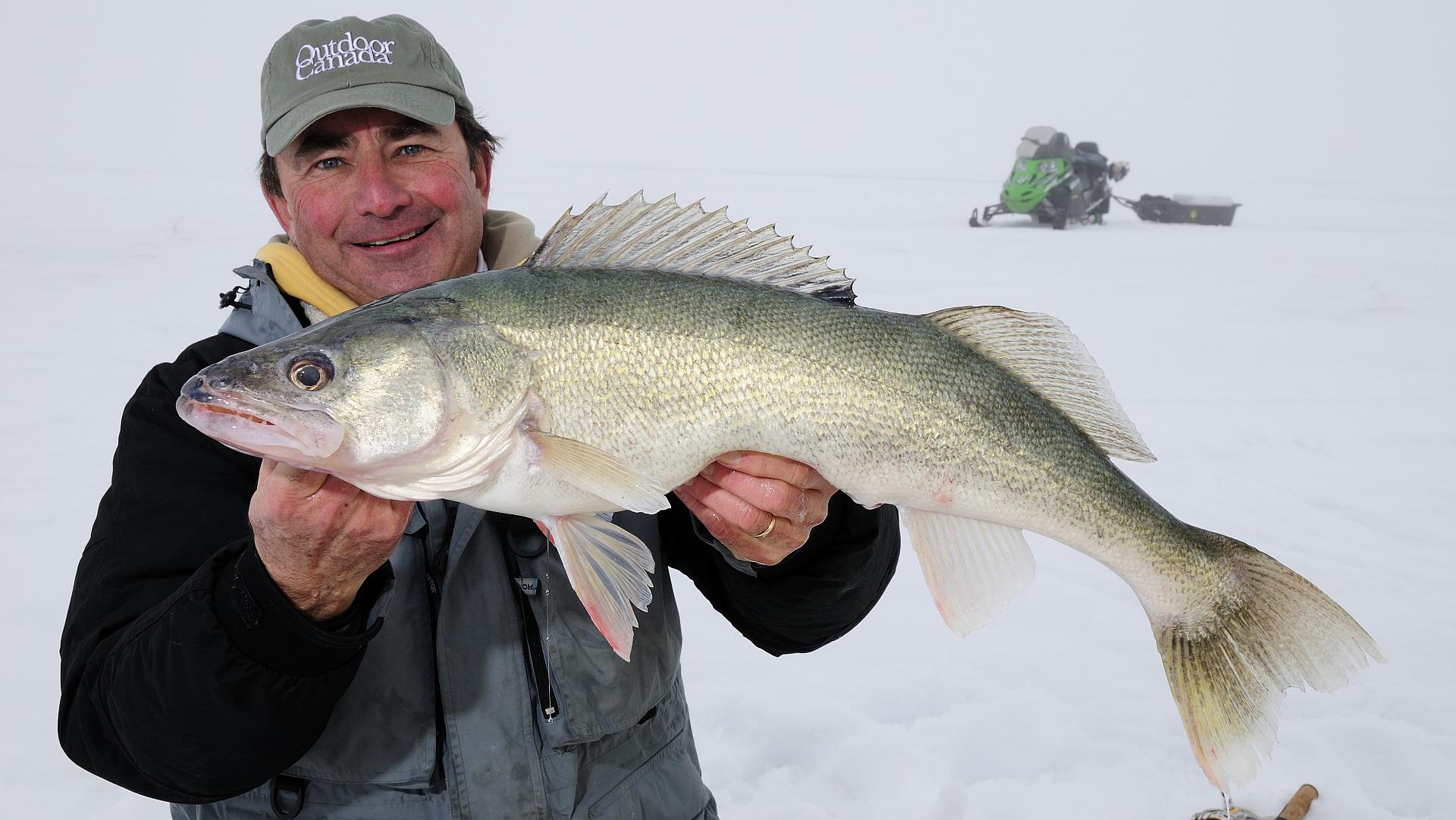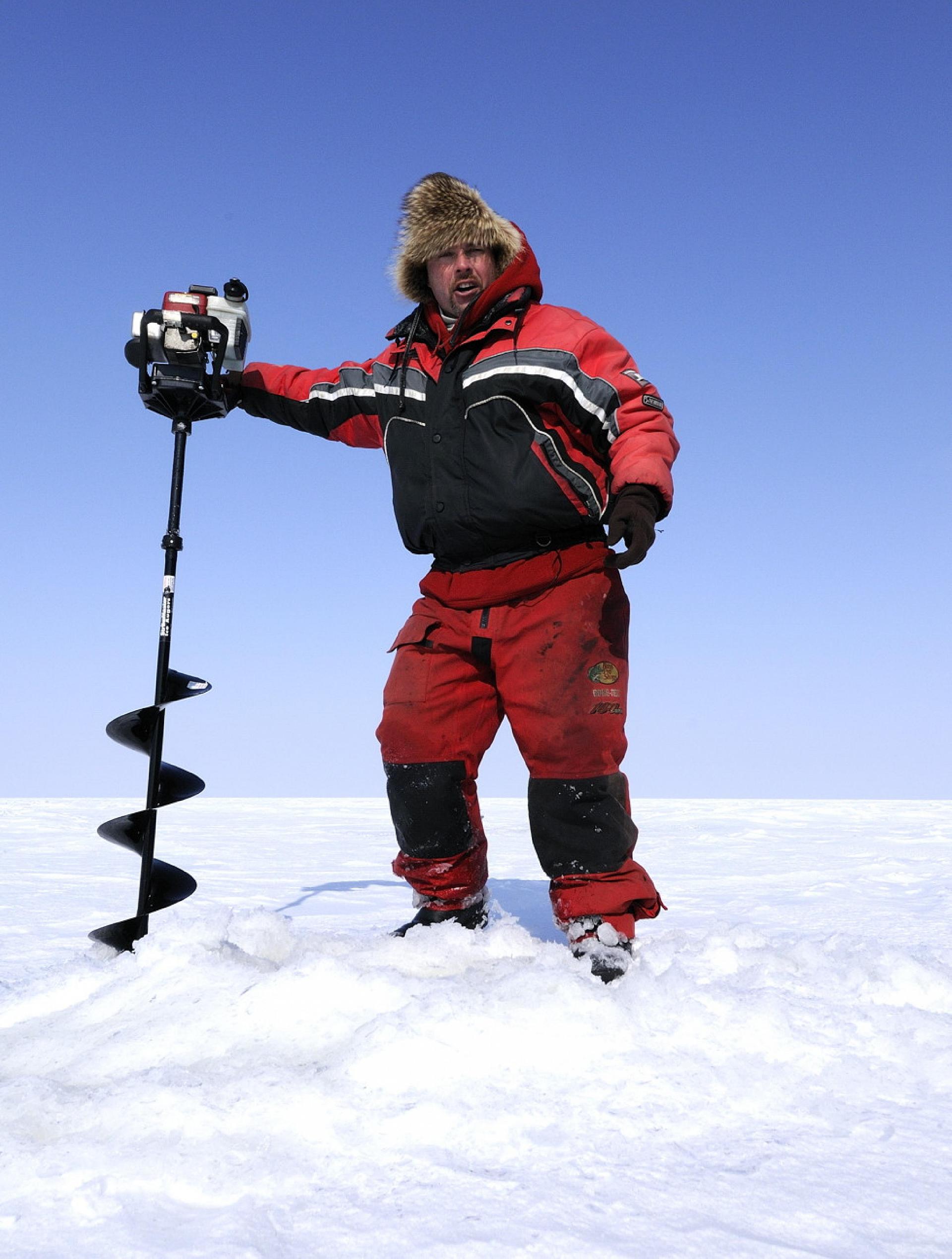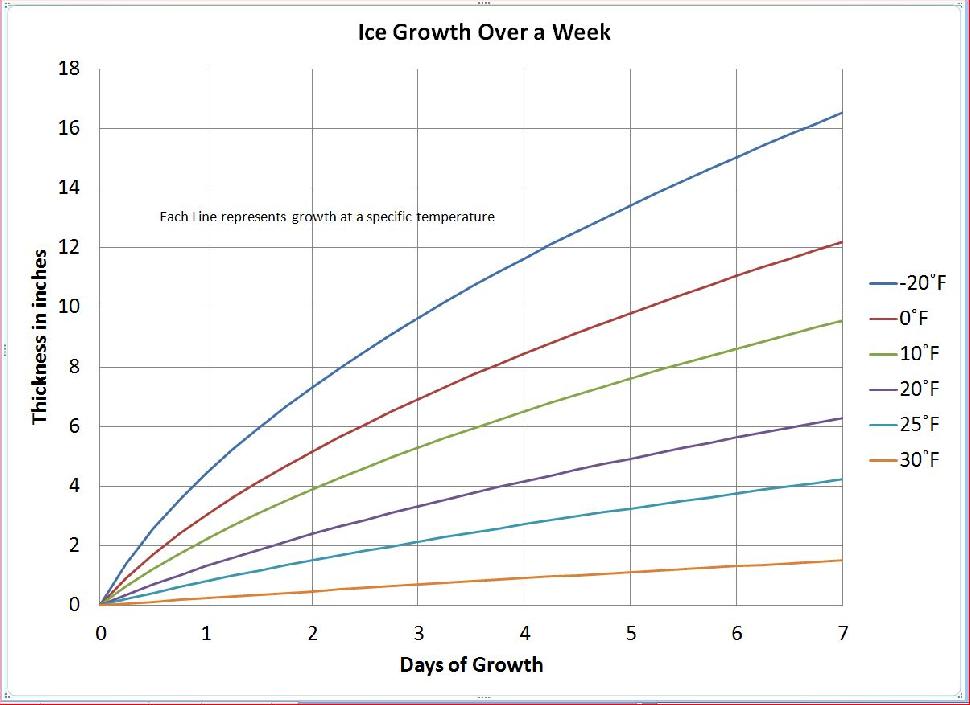When will your lake freeze?
Here’s how to guess when your hardwater season will begin
Advertisement
Gord Pyzer originally posted this blog in December 2015, but it seems relevant this season as well, especially if you’re as eager to get on the ice as we are…
While much of the eastern half of Canada has been basking in unseasonably warm, almost hot summer-like temperatures, the rest of the country has finally been chilling down.
Advertisement
And at long last, the lakes, rivers, reservoirs, pits and ponds are freezing over and making good ice.
But, here is the question everyone is wondering about, and something that Ang and I discussed on Saturday’s Outdoor Journal Radio Show. How long will it take for the ice to build up on the lakes before we can safely travel and fish on them?
There are several highly scientific methods and mathematical formulas that you can use to predict the growth of ice on your favourite lake, and they’re all essentially based on one controlling factor called freezing degree days that takes into consideration the air temperature, wind speed and something called radiational cooling.
Advertisement
Now, here is the really neat part.
Advertisement
To determine freezing degree days and how fast your favourite lake will build up ice, start by taking the average temperature (in degrees Fahrenheit) over the past 24 hours. So, let’s say that the daytime high yesterday was 30 F and the night time low was 20 F. This means the average temperature was 25 F. Now, subtract the average temperature (25 F) from the freezing point of water (32 F) and we get 7 freezing degree days.
If the day time high was 20 F, on the other hand, and the night time low was 0 F, the average temperature would have been 10 F, giving us 22 freezing degree days (32 F – 10 F = 22 FDDs).
See how simple it is?
Now, based on the studies that have been done, once a thin sheet of ice has formed on a lake, it will typically increase at the rate of one inch / 15 freezing degree days (FDDS).
So, if we go back to our examples, this means that on the relatively warm day, when there were 7 FDDs, the lake made about one half-an-inch of ice over the 24-hour period. But, on the much colder day, when we experienced 22 FDDs, the lake made about 1.5-inches.
Now, we need to take a couple of important considerations into effect because the formula is based on having a slight to moderate wind speed, no snow on the ground and clear skies. These things all help to pull heat out of the water and accelerate the growth of ice.
Unfortunately, where I live in Northwestern Ontario, on Lake of the Woods, we have well over a foot of snow right now and, as most folks are aware, snow provides excellent insulation that slows down the penetration of frost and cold temperatures. In addition, many of our days recently have been calm and overcast. So, when you take these conditions into effect, even with the same number of freezing degree days, the speed at which ice forms is roughly cut in half.
Finally, here is one last fact you’ll want to consider later this winter, when in many parts of the country we’ll have ice on the lakes approaching three feet or more in thickness. Thick ice acts like deep snow, in terms of providing insulation and thus, significantly slowing down the formation of more. It is why in the high Arctic and Antarctic, where winter persists almost year round, lakes don’t freeze all the way to the bottom.
So, how soon will the ice on your favourite lake, river, river, pit or pond be thick enough so that you can safely travel and fish on it? Calculate the number of freezing degree days and you’ll quickly know.
Or use the following charts.




